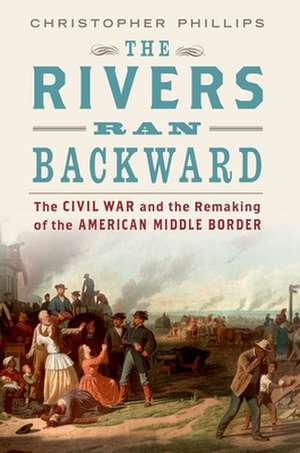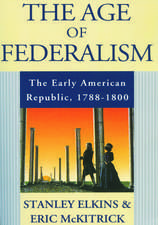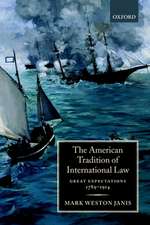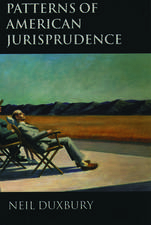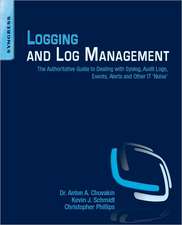The Rivers Ran Backward
Autor Christopher Phillipsen Limba Engleză Paperback – 30 apr 2019
| Toate formatele și edițiile | Preț | Express |
|---|---|---|
| Paperback (1) | 278.92 lei 22-36 zile | |
| Oxford University Press, USA – 30 apr 2019 | 278.92 lei 22-36 zile | |
| Hardback (1) | 278.47 lei 31-37 zile | |
| Oxford University Press – 15 iun 2016 | 278.47 lei 31-37 zile |
Preț: 278.92 lei
Nou
Puncte Express: 418
Preț estimativ în valută:
53.38€ • 55.64$ • 44.44£
53.38€ • 55.64$ • 44.44£
Carte disponibilă
Livrare economică 16-30 decembrie
Preluare comenzi: 021 569.72.76
Specificații
ISBN-13: 9780190053802
ISBN-10: 0190053801
Pagini: 528
Dimensiuni: 165 x 236 x 36 mm
Greutate: 0.66 kg
Editura: Oxford University Press, USA
ISBN-10: 0190053801
Pagini: 528
Dimensiuni: 165 x 236 x 36 mm
Greutate: 0.66 kg
Editura: Oxford University Press, USA
Notă biografică
Christopher Phillips is Professor of History and Department Head at the University of Cincinnati. He is the author of seven books, including Damned Yankee: The Life of General Nathaniel Lyon; Freedom's Port: The African American Community of Baltimore, 1790-1860; Missouri's Confederate: Claiborne Fox Jackson and the Creation of Southern Identity in the Border West; and The Civil War in the Border South.
Descriere
Descriere de la o altă ediție sau format:
Most Americans believe that the Ohio River was a clearly defined and static demographic and political boundary between North and South, an extension of the Mason-Dixon Line. Once settled, the new states west of the Appalachians -- the slave states of Kentucky and Missouri and of the free states of Illinois, Indiana, Ohio, and Kansas -- formed a fixed boundary between freedom and slavery, extending the border that inevitably produced the war. None of this is true, except perhaps the outcome of war. But the centrality of the Civil War and its outcome in the making of these tropes is undeniable. Historian Christopher Phillips contests the assumption that regional identities throughout the "Middle Border" states were stable in the era of the Civil War. States such as Missouri and Kentucky tended to identify as more western than southern during the first half of the nineteenth century. Conversely, much of the population of the lower Midwestern states of Ohio, Illinois, and Indiana had stronger cultural, economic, and political ties to slave states than to New England or the Middle Atlantic. But across the region the Civil War left an indelible imprint on the way in which residents thought of themselves and other Americans, proving as much a shaper as a product of regional identities. A sweeping argument employing a strong narrative, telling vignettes, and the voices of regional and national figures, this book makes a major contribution to Civil War history and to American history on a broader scale.
Most Americans believe that the Ohio River was a clearly defined and static demographic and political boundary between North and South, an extension of the Mason-Dixon Line. Once settled, the new states west of the Appalachians -- the slave states of Kentucky and Missouri and of the free states of Illinois, Indiana, Ohio, and Kansas -- formed a fixed boundary between freedom and slavery, extending the border that inevitably produced the war. None of this is true, except perhaps the outcome of war. But the centrality of the Civil War and its outcome in the making of these tropes is undeniable. Historian Christopher Phillips contests the assumption that regional identities throughout the "Middle Border" states were stable in the era of the Civil War. States such as Missouri and Kentucky tended to identify as more western than southern during the first half of the nineteenth century. Conversely, much of the population of the lower Midwestern states of Ohio, Illinois, and Indiana had stronger cultural, economic, and political ties to slave states than to New England or the Middle Atlantic. But across the region the Civil War left an indelible imprint on the way in which residents thought of themselves and other Americans, proving as much a shaper as a product of regional identities. A sweeping argument employing a strong narrative, telling vignettes, and the voices of regional and national figures, this book makes a major contribution to Civil War history and to American history on a broader scale.
Recenzii
[A] sprawling account....Phillips' account of the middle border's Civil War is a welcome addition to a historiography of the Civil War that remains in many ways divided into North and South.
Despite the complex topic, The Rivers Ran Backward is a readable, well-written and exhaustively researched work (with a 47-page bibliography to prove it) and is certainly one of the most important Civil War books in recent memory.
Phillips's thoroughly researched and well-argued account presents an original and persuasive interpretation that deserves wide attention. The Rivers Ran Backward should become a standard work on the trans-Appalachian West.
essential reading for anyone interested in the American Civil War and its unforeseen consequences.
Phillips' expert command of Kentucky and Missouri history enables him to analyze incisively the war's impact in the Lower North ... [The subfield's] most important and wide-reaching title to date.
Despite the complex topic, The Rivers Ran Backward is a readable, well-written and exhaustively researched work (with a 47-page bibliography to prove it) and is certainly one of the most important Civil War books in recent memory.
Phillips's thoroughly researched and well-argued account presents an original and persuasive interpretation that deserves wide attention. The Rivers Ran Backward should become a standard work on the trans-Appalachian West.
essential reading for anyone interested in the American Civil War and its unforeseen consequences.
Phillips' expert command of Kentucky and Missouri history enables him to analyze incisively the war's impact in the Lower North ... [The subfield's] most important and wide-reaching title to date.
